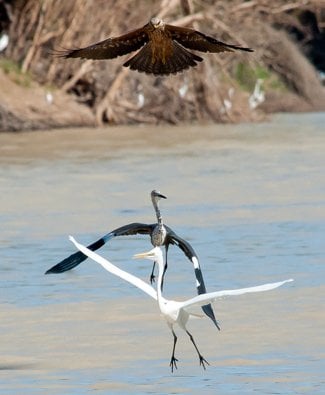Queensland’s desert channel rivers protected

QUEENSLAND’S CHANNEL COUNTRY will be permanently protected, the state government has announced.
The protection covers the Cooper Creek, Georgina and Diamantina rivers, in the heart of the desert channel country in north-west Queensland.
The Western Rivers Alliance, a coalition of regional organisations, graziers and conservation groups, hailed the decision as “momentous for western Queensland.”
The Act follows almost three years of local negotiations, largely driven and shaped by the leadership within western Queensland’s local governments.
In terms of the positive benefits, the region’s natural environment will improve, filling Lake Eyre and safeguarding water supplies for local graziers, the government says.
10 million acres of Queensland protected
All in all, over 10 million acres of land have been set aside for protection, prohibiting coal seam gas development in the region’s rivers and floodplains, creating 10 new indigenous conservation ranger jobs, and funding programs for weed and feral animals control.
Angus Emmott, from the Australian Floodplain Association and a third-generation grazier from Noonbah Station in western Queensland, says the “protection of these rivers is ground-breaking, and a great reassurance to graziers.”
“These are some of the most amazing desert wetlands in Australia, and an amazing part of the world,” he says. “This Act is going to protect the unique nature of these rivers.”
Cooper Creek’s place in Australian history
Cooper Creek, Georgina and Diamantina rivers are etched into Australian bush history – explorers Burke and Wills tragically died at Cooper Creek in 1861 – and the rivers are immortalised by the Bush poet Banjo Patterson.
“These systems are dry desert rivers, but when they flood some of the best beef country in Australia is created,” Angus says. “Living and working out here, our greatest fear is from mining. Protection under the Wild Rivers Act means new mining and coal seam gas is now prohibited from our waterways and vast floodplains.”
Regular flooding transforms these arid desert rivers into lush paradises bursting with fish, birds and wildflowers, as masses of water travel the hundreds of kilometres from the western slopes of the Great Dividing Range in North Queensland to South Australia’s Lake Eyre.
Bob Morrish, chairman of the Cooper’s Creek Protection Group, says “the Wild Rivers Act sends a signal to the mining industry to keep away from our rivers and floodplains, so we can manage them for future generations.”
RELATED STORIES

